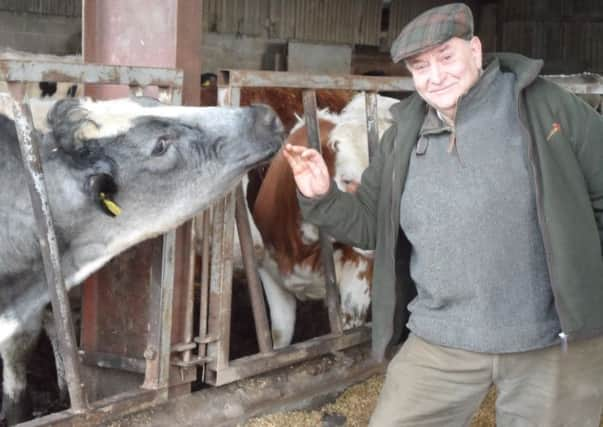Livestock dealer is a ringside character


It could be his colourful language that sounds so good when he utters certain words that you can’t help but join him in a veritable rainbow of oral malevolence, whilst at the same time smiling along; alternately it could be his own self-deprecation or simply a man who enjoys life.
When people often say there aren’t the characters in farming any longer they have obviously never met someone like him.
Advertisement
Hide AdAdvertisement
Hide AdHe could have been lost to farming early on though as he batted as a cultured number four for North Duffield and Woodhouse Grange in the York Senior League and went to nets at Headingley, admittedly rather more in hope than expectation in trials for Yorkshire CCC. It was a sobering experience.
“Chris Old knocked my off stump clean out of the ground. I had a second attempt at facing him when we played against a Yorkshire XI at Woodhouse Grange. He ran in again for his first ball and this time I got forward to him. He hit me so hard on the pad that the rest of what I thought is unprintable in the Yorkshire Post!”
Ralph farms at East Grange Farm in Thorganby, which is tucked away along the banks and flood plains of the River Derwent. He’s married to Cherry, daughter of racehorse trainer Mick Easterby. They live at Low Moor Farm, Scackleton in the Howardian Hills, 25 miles from Thorganby. Whilst commuting is often undertaken in other businesses, farming is not one of those where very many farmers have to travel so far to start their day’s work. He sees the funny side of not being at home too much.
“I was talking to a chap the other day who is 75-years-old. I said to him ‘why, you silly old bugger, are you coming to market now, after all you don’t have anything to sell?’ He said that he couldn’t do to be at home all day and that he makes a point of getting out at five in the morning and not getting back until at least four in the afternoon.
Advertisement
Hide AdAdvertisement
Hide Ad“When we married in 1982 we lived here at Thorganby but the farmland up at Scackleton was her dad’s and it’s better there for the horses so we moved. I was born at Corner Farm, Selby Common where my mum and dad were tenant farmers. We came here when I was four-years-old and back then all the land was owned by Dunnington Jefferson’s whose estate ran to around 3,000-4,000 acres. This farm ran to 130 acres when we came. It has grown to 350 acres that we now own and we rent another 300 acres.”
Whilst Ralph has sympathy for the plight of the farmers on the Somerset Levels he believes firmly that the north/south divide has been shown in its true colours over the past weeks. He’s not against the coverage and promises of funding that has been forthcoming for his colleagues in the south-west, he just wishes that the same courtesy would be applied for his and other neighbouring farmers’ problems.
“Our Ings land has this kind of problem every year. Look all around Yorkshire and you will see hundreds of acres flooded regularly. Derwent land floods easily and the rain never stopped between October 2012 and March 2013. We were flooded here all year. We had 250 cattle that we had to fetch back in during April that never came out again the whole summer because the land was under water throughout.
“When this kind of problem happens down south it’s all over the TV screens. I’m not saying it shouldn’t be it’s just that when we have it up here, and there’s plenty under water already, you rarely hear about it nationally. And now the farmers down south are getting compensation for it.”
Advertisement
Hide AdAdvertisement
Hide AdRalph grows 130 acres of wheat and the same again of barley, with smaller plots of forage maize, beans, oats and fodder beet. It’s pretty much all for feed. The rest of the farming operation is livestock-based with cattle, sheep and game. His interest in livestock started in his teens.
“The first calf I ever bought cost me £2.50 from the old York market. I started rearing calves when I was about 15. We now have between 200-500 cattle on the farm at any one time, plus our 250 Mule X Texel breeding ewes and buy in around 1,200-1,400 hoggs to graze the grasses from August each year.”
These days Ralph is probably better known for his activity around the livestock markets than his farming operations. At one time he was travelling hundreds of miles every day buying stock from further north. The catalyst for this was his pal Jimmy Smith who operated a slaughterhouse in Castleford.
“Going up with Jimmy opened my eyes to what I could do. I thought I could sell sheep and cattle for more back at home and that’s what I did. I started fitting up local butchers in York with what they needed and it soon grew. I was quickly up to buying 100-200 sheep a week and was selling them that fast I had to go up again later in the week.”
Ralph now spends three days a week at market and attends Selby, where he’s chairman, York and Thirsk. His other farming interest is in game.